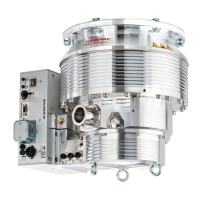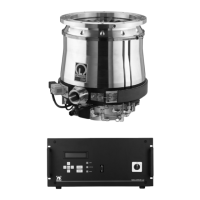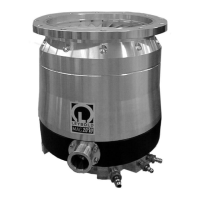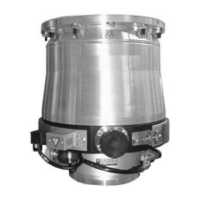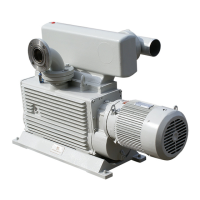Installation
28 300324726_002_C0 - 10/2016 - © Leybold
Install an inlet screen
Foreign objects which enter the pump through the intake would cause seri-
ous damage to the rotor. That’s why we recommend installing an inlet
screen. Damages caused during operation without the inlet screen are
excluded from warranty.
Insert the inlet screen so that the surface curvature is at the bottom and
apply some pressure lightly at the rim so that the inlet screen engages, see
Fig. 3.3.
If dust could pass from the vacuum chamber into the pump, then a micro-
pore filter must be installed between the vacuum chamber and the pump.
Flange mounting for ISO-F flanges
Mount the turbomolecular pump according to Fig 3.4 and tighten the bolts
crosswise step-by-step.
The contact surfaces of pump housing, vacuum system and centering ring
must be free of grease and dry so as to ensure adequate strength in case
the rotor should seize.
Flange mounting for CF flanges
Before fitting, check to ensure that the sealing edge is undamaged. Do not
touch the copper gasket and the sealing edge with your bare hands.
The contact surfaces of pump housing, vacuum system and centering ring
must be free of grease and dry so as to ensure adequate strength in case
the rotor should seize.
Mount the turbomolecular pump according to Fig 3.5 and tighten the bolts
crosswise step-by-step.
When the pump shall be baked out, the threads of the bolts should have
been lubricated with a high temperature lubricant.
NOTICE
NOTICE
NOTICE
Fig. 3.3 Installing the inlet screen
Correct
Wrong
NOTICE
Install the inlet screen as shown.
Installing the inlet screen upside
down may lead to contact bet-
ween inlet screen and rotor duri-
ng fast venting of the pump.
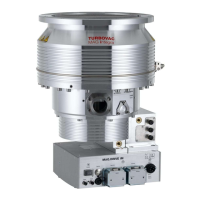
